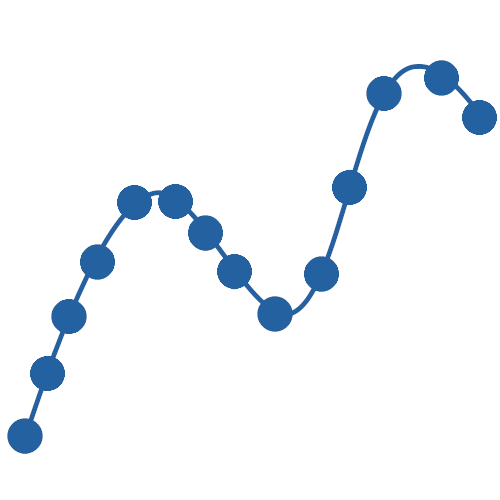the craft of statistical analysis free webinars
The Pathway: Steps for Staying Out of the Weeds in Any Data Analysis

Ever find yourself redoing parts of your data analysis? Getting so lost in the weeds that you’re not sure about your next step? Or trying every possible option and suddenly the whole day (or week) is gone? learn more
statistically speaking trainings
(Just About) Everything You Need To Know Before Starting a Survey

We discuss the advantages and disadvantages of the various data collection modes, types of samples available to target your population, how to obtain a representative sample, and how to avoid the pitfalls of bad questionnaire design. learn more
The Fundamentals of Sample Size Calculations

Sample size estimates are one of those data analysis tasks that look straightforward, but once you try to do one, make you want to bang your head against the computer in frustration. Regardless of how they make you feel, they are super important to do for your study before you collect the data. learn more
Power Analysis and Sample Size Determination Using Simulation

We explore strategies and steps for using simulations to estimate sample size and power, including a review of basic concepts of statistical power and effect size, a simulation-based approach to power analysis, and an overview of how to implement simulations in various popular software programs. learn more
Small Sample Statistics

Despite modern concerns about how to handle big data, there persists an age-old question: What can we do with small samples? Sometimes small sample sizes are planned and expected. Sometimes not. learn more
A Data Analyst’s Guide to Methods and Tools for Reproducible Research

Reproducible research refers to methods and tools developed by large software development teams but which can help you keep a sense of order in your data, analysis programs, and results. We review reproducible research methodology, using recent recommendations in the literature. learn more
Communicating Statistical Results to Non-Statisticians

One of the biggest challenges that data analysts face is communicating statistical results to our clients, advisors, and colleagues who don’t have a statistics background. Unfortunately, the way that we learn statistics is not usually the best way to communicate our work to others. learn more
Communicating Statistical Results: When to Use Tables vs Graphs to Tell the Data’s Story

We discuss when tables and graphs are (and are not) appropriate and how people engage with each of these media. We also explore design principles for good tables and graphs and review examples that meet these principles. learn more
Statistical Rules of Thumb: Essential Practices or Urban Myths?

There are many rules of thumb in statistical analysis that make decision making and understanding results much easier. Have you ever stopped to wonder where these rules came from, let alone if there is any scientific basis for them? Is there logic behind these rules, or is it propagation of urban legends? learn more
articles at The Analysis Factor
planning and choosing a data analysis
Strategies for Choosing and Planning a Statistical Analysis

The first real data set I ever analyzed was from my senior honors thesis as an undergraduate psychology major. I had taken both intro stats and an ANOVA class, and I applied all my new skills with gusto, analyzing every which way. learn more
When To Fight For Your Analysis and When To Jump Through Hoops

In the world of data analysis, there’s not always one clearly appropriate analysis for every research question. There are so many issues to take into account. They include the research question to be answered, the measurement of the variables, the study design, data limitations and issues, the audience, software availability, and the purpose of the data analysis. learn more
Chi-square Test vs. Logistic Regression: Is a Fancier Test Better?

Recently I received an email asking, “Why is using regression, or logistic regression ‘better’ than doing bivariate analysis such as Chi-square?” There are a number of different reasons I’ve seen. learn more
Statistical Consulting 101: 4 Questions you Need to Answer to Choose a Statistical Method

One of the most common situations in which researchers get stuck with statistics is choosing which statistical methodology is appropriate to analyze their data. If you start by asking the following four questions, you will be able to narrow things down considerably. learn more
5 Practical Issues to Consider in Choosing a Statistical Analysis

There are 4 questions you must answer to choose an appropriate statistical analysis: what is your research question, what is the scale of measurement of the variables used to answer the research question, what is the design, and are there any data issues? learn more
What Makes a Statistical Analysis Wrong?

One of the most anxiety-laden questions I get from researchers is whether their analysis is “right.” I’m always slightly uncomfortable with that word. Often there is no one right analysis. It’s like finding Mr. or Ms. Right. Most of the time, there is not just one Right. But there are many that are clearly Wrong. learn more
data preparation
An Easy Way to Reverse Code Scale Items

Before you run a Cronbach’s alpha or factor analysis on scale items, it’s generally a good idea to reverse code items that are negatively worded so that a high value indicates the same type of response on every item. learn more
Preparing Data for Analysis is (more than) Half the Battle

Recently, a colleague mentioned that while he does a lot of study design these days, he no longer does much data analysis. His main reason was that 80% of the work in data analysis is preparing the data for analysis. Data preparation is s-l-o-w and he found that few colleagues and clients understood this. learn more
Rescaling Sets of Variables to Be on the Same Scale

Attributes are often measured using multiple variables with different upper and lower limits. For example, we may have five measures of political orientation, each with a different range of values. learn more
The Wide and Long Data Format for Repeated Measures Data

One issue in data analysis that feels like it should be obvious, but often isn’t, is setting up your data. The kinds of issues involved include what a variable is, what a unit of observation is, and which data should go in each row of the data matrix. learn more
On Data Integrity and Cleaning

Recently I hired a Quickbooks consultant to bring my bookkeeping up from the stone age. (I had been using Excel). She had asked for some documents with detailed data, and I tried to send her something else as a shortcut. I thought it was detailed enough. It wasn’t, so she just fudged it. The bottom line was all correct, but the data that put it together was all wrong. learn more
running any data analysis
3 Tips for Keeping Track of Data Files in a Large Data Analysis

If you’ve ever worked on a large data analysis project, you know that just keeping track of everything is a battle in itself. Every data analysis project is unique and there are always many good ways to keep your data organized. learn more
Tricks for Using Word to Make Statistical Syntax Easier

We’ve talked a lot around here about the reasons to use syntax — not only menus — in your statistical analyses. Regardless of which software you use, the syntax file is pretty much always a text file. This is true for R, SPSS, SAS, Stata — just about all of them. learn more
The Data Analysis Work Flow: 9 Strategies for Keeping Track of your Analyses and Output

Knowing the right statistical analysis to use in any data situation, knowing how to run it, and being able to understand the output are all really important skills for statistical analysis. Really important. But they’re not the only ones. learn more
Respect Your Data

The steps you take to analyze data are just as important as the statistics you use. Mistakes and frustration in statistical analysis come as much, if not more, from poor process than from using the wrong statistical method. learn more
communicating results
Examples for Writing up Results of Mixed Models

There are many pieces of the linear mixed models output that are identical to those of any linear model–regression coefficients, F tests, means. But there is also a lot that is new, like intraclass correlations and information criteria. And a lot of output we’re used to seeing, like R squared, isn’t there anymore. learn more
Adding Statistical Equations to Word using Microsoft Equation Editor

Have you ever tried to type a complex fraction, like a logit link, using Word, by lining up two rows of type? Or a regression model equation? It’s possible, but it takes forever to subscript all those i’s and change the font of all your B’s to β’s. I used to, and it’s not easy. learn more

